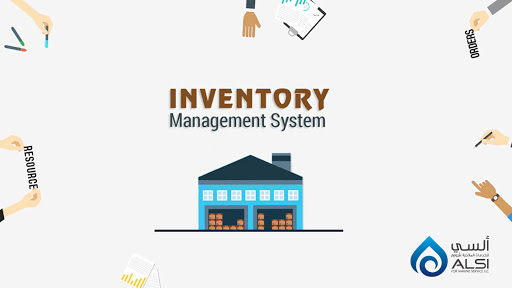Inventory management can be defined as the process of ordering, storing, and selling the inventories of a company. Inventory management includes the purchase of raw materials, warehousing, and distribution of finished goods. Inventory is one of the most important assets of a company. The improper management of Inventory can turn it into a liability. Companies with complex supply chain and manufacturing processes find it difficult to manage the inventory surplus and shortage. Despite the size of the business, appropriate inventory management is ultimately necessary to keep the inventory on track. The inventory management strategy varies depending on the industry type. For example, the strategy used in a petrochemical industry varies with that of the pharmaceutical industry because of the nature of product and demand. Effective inventory management ensures the safety of the inventories, tracks sales, ensures accuracy, and eliminates surplus. Regardless of the size of the business and the inventory management strategy used, listed below are few tips for the efficient management of inventory.
- Re-inspect the current system
Before moving on to any optimization techniques, have a thorough study on where the problem lies in the inventory management. Know what improvements are to be made in the current system so as to reach the expected level in business. Without having a clear picture of the underlying problem, the solution cannot be determined. Sometimes the improper use of the system itself may affect inventory management.
- Product categorization
An inventory may contain thousands of similar and different products. Hence it is imperative to categorize these products depending on various accounting methods used. The ABC method and First-In-First-Out (FIFO) are the few common methods used in inventory categorization. In the ABC methods, the inventories are categorized based on the value of product and the frequency of sales. On the other hand, in the FIFO method, the oldest products are sold first and not the newest. FIFO method is used mostly in the case of perishable goods where unsold spoilage can be avoided.
- Set a minimum stocking level
Set a minimum level of stock to be maintained in the inventory for each product. Setting this can alert whenever the stock lowers the predetermined level. This helps to keep an eye on the level of inventory in the warehouse and avoid shortage. It completely depends on the product type, movement time, and restocking time that a level could be set. Remember that these limits need to be reconsidered frequently because the conditions may change over time.
- Automation of inventory management
Manually controlled inventory management may end up in erroneous data interpretations. The 21st-century market is flooded with both enterprise-level and cloud-based tools and software platforms which automates the entire inventory management process. The accuracy in the financial information can help the inventory staff at every level to make informed decisions and take necessary actions accordingly.
- Utilization of mobile applications and devices.
Several mobile applications and devices are available to ensure the inward and outward movement of products in a warehouse. Paper sock reports can cause errors due to human oversight. Warehouse managers can focus on the use of mobile devices such as barcode scanners to track the movement of stock. Similarly, the use of the mobile applications can help update inventory data in real-time and the customer who wishes to order a product will get the accurate data of the stock availability. This helps in improving customer service along with efficient inventory management.
- Regular inventory auditing
Regular auditing is another tip that can be adopted to maintain an efficient inventory. Though inventory software and warehouse reports provide the stock detail, it is necessary to check whether the report matches with the actual stock. This can help in updating the inventory records accurately. It is imperative for the internal staff to have access to the promptly recorded information so as to manage and re-stock the inventory accordingly.
Regular spot check counts on the inventory items can help optimize the product count.
- Manage a healthy supplier relationship
Managing a strong relationship with the suppliers is helpful in the efficient management of inventory. A strong build supplier relationship helps when there is an urgency in restocking the products, returning a slow-selling product, fixing manufacturing issues, etc. Perhaps, having a strong relationship means to have open lines of communication with the supplier. This must not be limited to just price negotiation but about the current trends, promotion plans, potential shortages, and the needed improvisations to meet the demands.
- Use of Data analytics and Effective forecasting
Optimization of inventory can be done effectively by gaining access to real-time data and analytics. Data analytics can help in the effective forecasting and planning of the future accordingly. With the help of data analytics, the upcoming market demand can be predicted and can scale the inventory accordingly. This can, in turn, increase the cash flow and the profit margin. Similarly, accurate forecasting on order placing based on seasonal events and promotions can also help optimize the inventory management.
- Opt for Dropshipping
Considering drop shipping can completely cut off the inventory cost as the company does not hold an inventory at all. In dropshipping, instead of owning a warehouse and managing the inventory and shipping the product internally or through third-party logistics, the customer orders and the shipment details are transferred to manufacturers or other retailers or wholesalers. The transportation of these orders is done directly through these intermediaries.
Inventory management is a tedious task if not executed efficiently. An appropriate inventory management strategy can help increase profit margin by reducing cost, predict future demand through data analytics, and thus prepare for the upcoming trends. With proper inventory optimization techniques and tools, your business can meet the set benchmarks with ease.










